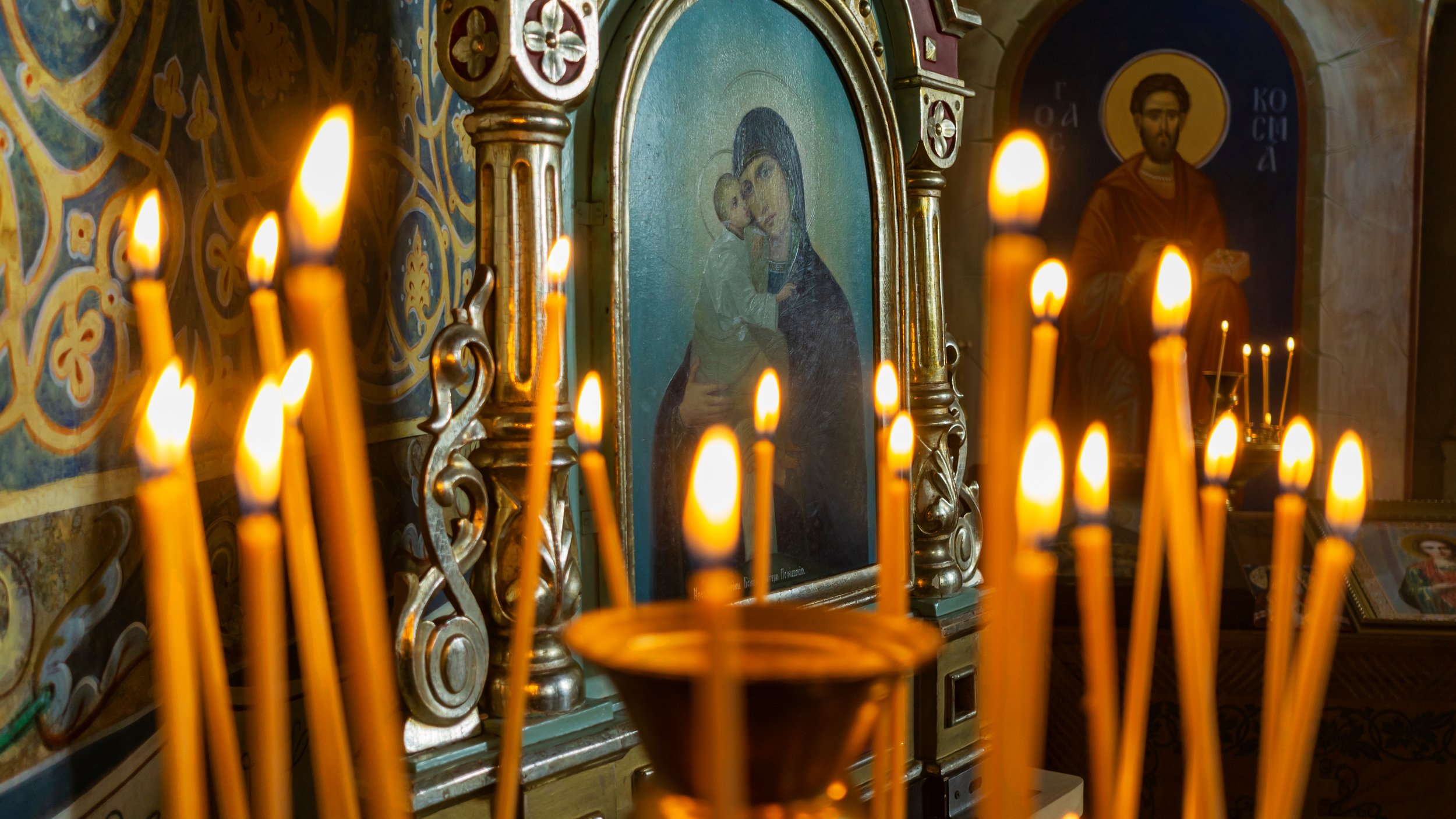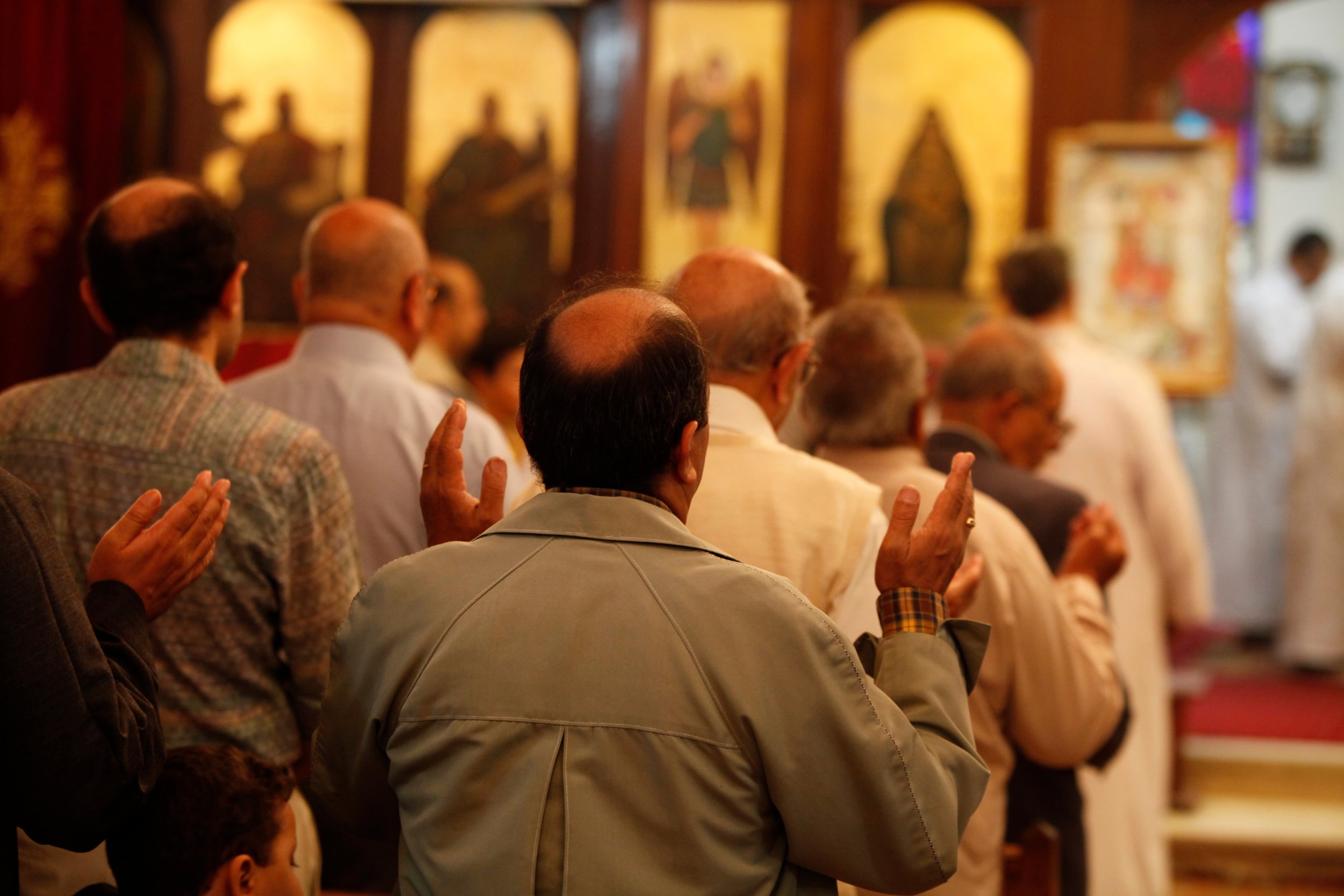
New to Orthodoxy
Learn more about our beautiful faith, below.
The church adheres to the Nicene Creed. The Coptic Orthodox Church worships the Father, the Son and the Holy Spirit in the Oneness of Nature. We believe in One God: Father, Son and Holy Spirit; three equal Co-Essential and Co-Indwelling Hypostasis (Persons). The Blessed and Holy Trinity is our One God. We Believe that Lord Jesus Christ, the Only-Begotten of the Father and Who is One with Him in Essence is the only Savior of the world.
About Our Faith
The word “Sacrament” in Greek means “mystery”. A Sacrament combines two elements: one visible, the other invisible – one can be seen, or tasted, or touched, or heard while the other remains unseen to the eyes of the flesh.
“Wisdom [our Lord Jesus Christ] has built her house [the Church], She has hewn out her seven pillars [the seven Sacraments]” (Prov 9:1)
The Seven Holy Sacraments:
The Sacrament of Baptism
The Sacrament of Confirmation -- The Holy Oil (Myron)
The Sacrament of Repentance & Confession
The Sacrament of The Eucharist
The Sacrament of The Anointing of The Sick
The Sacrament of Matrimony
The Sacrament of Holy Orders (Priesthood)
The Seven Sacraments of the Church are the channels by which we receive the graces and blessings of the Holy Spirit.
The Holy Spirit works in the church through the Sacraments, giving us His gifts, blessings and comfort, and teaches us and guides us to the way of truth. "But the Comforter, the Holy Spirit, whom the Father will send in My name, He will teach you all things and bring to your remembrance all things that I said to you." (John 14:26)
Liturgical & personal worship points us to something so much bigger than ourselves. Our participation in the sacramental life is the foundation of our ancient faith and allows us to enter into a transformational life in Jesus.
Holy Sacraments
The Holy Communion - The Sacrament of the Eucharist
In the Sacrament of the Eucharist, believers eat Lord Jesus Christ’s Holy Body and drink His precious Blood under the physical appearance of bread and wine. This Sacrament is called the Sacrament of all Sacraments and/or the crown of the Sacraments.
Our Lord instituted this Sacrament on Covenant Thursday, just a few hours before His arrest and trial. After He had washed the feet of the disciples as a sign of their repentance and preparation, “He took bread, blessed it and broke it, and gave it to the disciples and said, ‘Take, eat; this is My body.’ Then He took the cup, and gave thanks, and gave it to them, saying, ‘Drink from it all of you. For this is My blood of the new covenant, which is shed for many for the remission of sins’” (Matthew 26:26-28)
Benefits of the Sacrament
Abiding in Lord Jesus Christ: “He who eats My flesh and drinks My blood abides in Me, and I in him” (John 6:56). Consequently we bear the fruits of the spirit, “He who abides in Me, and I in him, bears much fruit; for without Me you can do nothing” (John 15:5)
Obtaining Eternal Life: “Whoever eats My flesh and drinks My blood has eternal life, and I will raise him up at the last day… He who eats this bread will live forever” (John 6:54,58)
Growth & Maintenance of Our Spiritual Life: “Unless you eat the flesh of the Son of Man and drink His blood, you have no life in you… For My flesh is food indeed, and My blood is drink indeed… he who feeds on Me will live because of Me” (John 6:53,55,57)
Salvation & Remission of Sins: “This is My blood of the new covenant, which is shed for many for the remission of sins” (Matthew 26:28)
Unification of Believers: “For we, being many, are one bread and one body; for we all partake of that one bread” (1 Corinthians 10:17)
For 2,000 years, followers of Jesus celebrated the Divine Liturgy and we continue the same service that Jesus gave His disciples till today.
About Coptic Orthodoxy
The term "Coptic" is derived from the Greek "Aigyptos" meaning "Egyptian". When the Arabs arrived in Egypt in the seventh century, they called the Egyptians "qibt". Thus the Arabic word "qibt" came to mean both "Egyptians" and "Christians".
The term "Orthodoxy" here refers to the preservation of the "Original Faith" by the Copts who, throughout the ages, defended the Old Creed against the numerous attacks aimed at it. Less changes have taken place in the Coptic Church than in any other church whether in the ritual or doctrine aspects and that the succession of the Coptic Patriarchs, Bishops, priests and Deacons has been continuous.
The definition of Orthodoxy can be found within the roots of its name. One of the roots of the name "Orthodoxy" is taken from the Greek word which means "opinion, teaching". It can also mean "glory". Therefore, Orthodoxy means the "proper method of rendering glory, right worship, and consequently the right way of teaching about the One to whom the glory is rendered."
The Coptic Language is the fourth and last step of evolution of the Ancient Egyptian language, after Hieroglyphs, Heratic and Demotic. All four are identical and differ only in their system of writing. Its alphabet is derived from the Greek alphabet, with seven extra letters that represent sounds peculiar to the Egyptian language and non-existent in Greek.
Coptic remained as the language of native Egyptians until the Arab invasion of Egypt in 641 AD. After that invasion, Copts were harassed and forced to abandon their native language for Arabic. For several centuries Copts remained bilingual but by the thirteenth century, they became mainly Arabic speakers. Coptic remained however the liturgical language of the Coptic Church, and a strong symbol of the resistance of the Copts to the efforts of their Arabization.
Coptic Language
Church Martyrs
The Coptic Church has faced discriminations and hardships of all kinds, including active persecutions. Yet, the Church has thrived, and the traditions have survived in these often-unfriendly environments. The vast and innumerable martyrs are a testimony to the Coptic Orthodox followers' unshakable faith.
The term "Martyr" has become to mean one who WITNESSES for the Lord Jesus Christ by dying for His Holy Name. The Coptic Church has innumerable martyrs and saints. It is historically famous for its long-suffering and courageous capabilities to sustain persecutions and hardships.
The Coptic Church commemorates to this day its countless martyrs, by a Coptic Calendar in which the years are dated from anno martyrium, (AM) the "Year of the Martyr". This calendar recalls to all Copts the great persecution of the Christians that began in Egypt in 284 AM.
We thank the Lord our God for these great men and women who had the dedication and courage to remain faithful to Christianity with the totality of their lives. They stood as firm WITNESSES to the Word of God. TRULY THIS IS GLORY TO GOD IN THE HIGHEST!
Explanation of Icons
Coptic icons, or holy pictures, are a way to represent a story and communicate with saints. They are often found in churches, homes, and bags. Icons are read to tell a spiritual story, and they often feature people or angels in profile with large eyes to represent wisdom. The colors are vivid and represent heavenly and royalty. Icons represent a story. Therefore, you read an icon. That is why Orthodox Church icons do not appear to depict the natural human, but rather focus on the essence of the story told in the icon. Coptic Christians venerate icons, not adore them.






